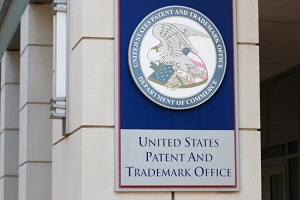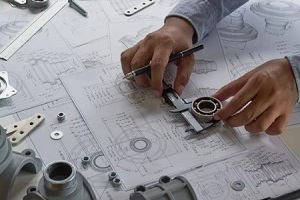 The United States Patent and Trademark Office has an application and approval process in place that allows inventors to secure the rights of their invention for a certain period of time and protect against patent infringement. The basic principles of patents are outlined below.
The United States Patent and Trademark Office has an application and approval process in place that allows inventors to secure the rights of their invention for a certain period of time and protect against patent infringement. The basic principles of patents are outlined below.
Patent Types
There are three main types of patents, and each offers a specific length of coverage.
Utility Patents
Most of the patents issued by the U.S. Patent Office fall under this category; this typically applies to the types of inventions most people associate with patents. This category has four subcategories:
- Machines – This applies to anything that performs a specific function.
- Articles of Manufacture – This is a very broad subcategory that covers any type of item that is manufactured.
- Processes – This encompasses methods of engineering, processes used by businesses and computer software.
- Compositions of Matter – Chemical compounds, pharmaceuticals and artificial genetic inventions fall under this category.
Utility patents offer inventors protection for 20 years beginning on the date of filing.
Design Patents
 Design patents apply to designs that are purely ornamental and do not serve any specific function. There is no need to prove the design’s utility, and these patents are generally easier to obtain than utility patents. Their protection is also somewhat limited as another design must be virtually identical to be considered to be infringing upon a patented design.
Design patents apply to designs that are purely ornamental and do not serve any specific function. There is no need to prove the design’s utility, and these patents are generally easier to obtain than utility patents. Their protection is also somewhat limited as another design must be virtually identical to be considered to be infringing upon a patented design.
Design patents offer protection for 14 years.
Plant Patents
A plant patent protects plant seeds derived from sexual reproduction and plants derived from asexual reproduction. It offers protection to creations arising from scientific experiments wherein different species of plants are combined to create new seeds and plants. This type of patent is the least common.
A plant patent’s protection will last for 17 years.
The Requirements for Obtaining a Patent
The basic requirements for obtaining a utility patent are:
The Subject Matter Must be Patentable
The invention must relate to a patentable subject matter that falls under one of the four aforementioned subcategories of utility patents.
It Must Be New
 An invention must be truly new to obtain a patent. In patent law, everything that came before an invention is known as “prior art”, and the invention for which a patent is being requested must not be disclosed in prior art references in any direct or implicit way in order to qualify as new.
An invention must be truly new to obtain a patent. In patent law, everything that came before an invention is known as “prior art”, and the invention for which a patent is being requested must not be disclosed in prior art references in any direct or implicit way in order to qualify as new.
An invention will not meet this requirement if another patent or patent application already exists for it, or a product already in use employs the process used by the invention.
It Must Be Useful
The utility requirement is fairly straightforward. It specifies that the invention must be considered useful and act as a solution to an existing problem. It must function properly and serve a purpose to be considered useful.
It Cannot Be Obvious
The invention in question cannot be considered obvious. To determine this, the examiner will question whether a person skilled in the field of the invention would consider it obvious.
When Can a Patent Be Obtained?
The U.S. allows inventors to apply for a patent within a year of any publication about their invention, with the grace period starting on the date the information was made available to the public. This might be via an academic journal or similar publication; describing it to someone who has signed a confidentiality agreement is not public disclosure.
However, it is important to note that most other countries do not grant patents to inventions that have appeared in prior art, so those wishing to obtain international patents should consult a patent law attorney prior to any public disclosure of their invention.
Patent Applications
Patent applications typically contain the following components:

- Drawings – The drawings may include diagrams and other figures that help others to understand the invention. Flow charts, graphics and screen shots of software interfaces may also be provided.
- Specification – The specification section includes a detailed description of the invention that aligns with the drawings. It must be written in enough detail that someone with ordinary skill in the industry could recreate the invention.
- Claims – These are statements about how the invention’s various components make it unique. This is the only aspect of a patent application considered enforceable from a legal standpoint; therefore, this section must be worded with utmost care. If a certain aspect of the invention is described in another part of the application but not mentioned in the claims section, that component will not be covered. Patent law attorneys can ensure this crucial aspect of the application is written correctly.
Provisional Patent Applications
Instead of a standard application, inventors may choose to file a provisional application in certain cases. This allows the invention to be advertised as “patent pending” and gives the inventor an additional year to file their full application for a patent.
The Rights Provided by a Patent
A patent does not provide an inventor with the right to make or use their invention; instead, it gives them the power to stop others from importing, making or using it.
As a result, patent owners can make, sell or use their invention without being concerned about competitors making money from their ideas as a patent allows them to pursue financial damages for infringement. They may also sell the rights to other parties seeking to produce or sell their invention via licensing agreements and fees.
Learn More About Patents
To find out more about obtaining a patent by calling (202) 828-1008 or to make an appointment to begin the filing process, contact the Washington, D.C.-based patent and intellectual property attorneys at Metrolex IP.

